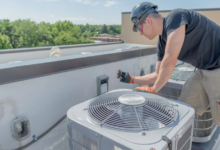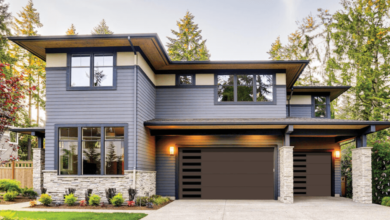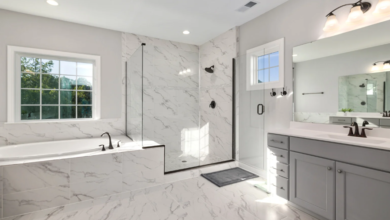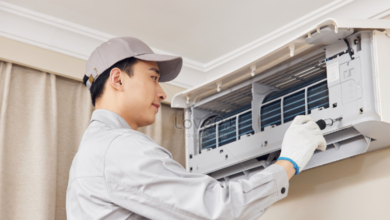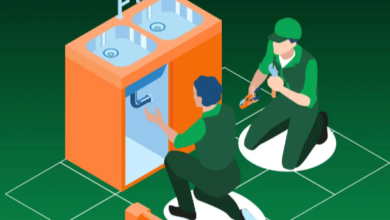What’s the Difference Between Central AC, Ductless Mini-splits, and Heat Pumps?
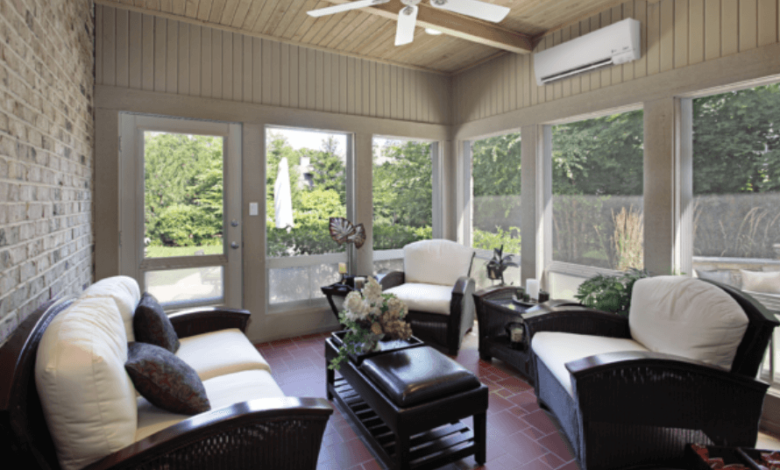
Central AC systems cool entire homes through ducts, while ductless mini-splits operate without ducts and provide zoned cooling. Heat pumps, on the other hand, can both heat and cool by transferring heat. With trusted HVAC maintenance by Beltway Air Conditioning & Heating, each of these systems can perform at its best. Each option offers unique advantages in terms of energy efficiency, space requirements, and budget considerations. Understanding these distinctions helps homeowners choose the most appropriate system for their needs.
Understanding the Core Technology
There is a wide range of differences between central air conditioners, ductless mini-splits, and heat pumps in the way they operate, the materials that they use, and the way they fit inside a home. Despite the fact that all three use refrigerants and compressors to circulate heat internally, they were created to meet special needs. These systems are further streamlined with thermostats and smart controls, which make them comfortable without much work for houses.
See also: Building Your Handyman Empire Discover the Road to Success
Central Air Conditioners
Central air conditioning systems are created to cool larger houses with the help of ducts. They are made of an outdoor unit that houses the compressor and condenser, and an indoor air handler with an evaporator coil. Although they can successfully cool a home as a whole, they cannot fit all homes and especially those that do not have ductwork.
Split heat pump systems or mini-splits can be particularly more efficient, particularly in ductless homes. With variable-speed compressors that are energy-saving, mini-splits offer individual room control.
The decision between central air and mini-splits requires reliance on the use of advisory services of an HVAC contractor because it depends on the layout of the home, needs, and budget. The disadvantage with central air is that it may leak into ducts and is expensive to install in an environment where ductwork does not exist.
Ductless Mini-Splits
Ductless mini-splits do not require ductwork and are, therefore, unusually well-suited to retrofitting older houses or to providing conditioned air to new constructions.
These employ refrigerant lines to link an outside compressor to one or more indoor heads, typically mounted on walls. Each head operates separately, providing exact temperature control of up to two individual rooms.
One outdoor compressor can have multiple indoor heads, as many as eight. Mini-splits are quieter than central systems and can perform well in extreme climates, even those with bitter winters.
Installation costs $4,000-6,000 per zone, so it’s a non-starter for many homeowners.
Heat Pumps
What is special about heat pumps is that they provide heating and cooling. They transfer the heat or out or in or out using refrigerants and compressors.
During the summer, they work like air conditioners, sucking the inside heat out and throwing it away outside. During the colder seasons, it switches to heating inside areas.
Inverter-based technology to control temperature efficiently, air-source, geothermal, and ductless heat pumps. Such systems may be used to replace furnaces or boiler heat.
The convenience of heat pumps ensures that they are a favorable consideration in all-year-round temperature control.
Key Differences in Cooling Systems
A good understanding of the central air conditioning systems, ductless mini-splits, and split heat pump systems is necessary when determining the right cooling system. Both these mini split systems have their own features, prices, and performance, which make them applicable to different demands and climates.
1. Functionality
The central AC employs a single unit of the indoor air conditioner connected with ducts and which supply cool air to the home with cool air. By contrast, ductless mini-split systems consist of an outdoor compressor that is attached to one or more air handlers located in separate rooms, which offer custom zone cooling.
Heat pumps are distinct in that they provide both heating and cooling, employing a reversible cycle to move heat between the interior and exterior. Although all three utilize refrigerants to cool down the temperature, their methods of dispersing it is what differentiate them.
2. Energy Efficiency
Ductless mini-splits can boast SEER ratings up to 27 — blowing away central AC’s 21-ish max. Inverter heat pumps manipulate the compressor speed to maximize energy efficiency, making them excellent for a wide range of climates.
Correct installation is key—badly installed systems will lose efficiency, no matter the type.
3. Upfront and Long-Term Costs
Central AC systems demand a major ductwork investment — as much as $18,000 or more in a retrofit home. Mini-splits are duct-free, but run $4,000–$6,000 per zone, with costs increasing for every indoor unit added.
Heat pumps might save more money in the long run because they’re two-in-one, but their upfront costs are higher.
4. Installation Process
Central AC is labor-intensive to install, as it involves ductwork. Mini-splits require mounting air handlers and running refrigerant lines, and heat pumps might require additional configurations for heating.
Professional HVAC services for all systems.
5. Home Aesthetics
There is no sign of central AC, and equipment is stored behind walls and ceilings. Mini-splits, however, are conspicuous wall-mounted units, which may be obtrusive.
The outdoor unit of heat pumps or mini-splits can influence aesthetics.
6. Climate Performance
Heat pumps, especially split heat pumps, work wonders in moderate climates but fall short in extreme cold unless using a geothermal source. Central AC systems are better for consistently hot climates, while ductless mini splits adapt to zones easily.
7. Noise Levels
Mini splits are the tiniest cooling choice with an almost silent operation, even internally, whereas the utilized traditional air conditioning system can produce audible airflow within the ducts; heat pump systems differ by model and location.
The Hidden Environmental Costs
Cooling systems such as central air systems, ductless mini splits, and heat pump systems give some relief, but their environmental footprint should be put into consideration. Refrigerants, energy consumption, and system durability are some of the factors that must be considered in sustainable decisions.
Refrigerant Impact
Refrigerants are essential to cooling, and can harm the environment when they escape. Hydrofluorocarbons (HFCs) that have a high GWP are commonly used in central AC and mini-splits. Consider R-410A, a typical refrigerant that is thousands of times more effective than CO 2 at warming.
However, the advantages of the new generation of heat pumps are that they are increasingly adopting low-GWP refrigerants like R-32, which reduces these risks. Any systems must be maintained so as not to leak. Forsaken mini-splits, such as mini-splits, may cultivate mold or have an obstructed internal component, resulting in ineffectiveness and greater emissions.
The transition towards more eco-friendly refrigerants is gaining more and more traction in the HVAC industry, and consumers must stay careful to minimize damage.
Energy Source
One of the considerations is energy use. Heat pumps are remarkably efficient and require just electricity, and this factor allows combining them with solar or wind power. This reduces reliance on fossil fuels, reducing carbon emissions.
Central AC and mini-splits require an electrical power supply; however, the situation is a different case regarding efficiency. High-performance mini-splits have the potential to save a lot on energy use, yet there may be maintenance problems, including the need to cleanse them by a professional.
They all can be combined with renewable energy; it only matters what clean ones can be found in the area. Selecting the models that consume less energy lowers consumption further.
System Lifespan
Sustainability is influenced by lifespan. Central AC systems and mini-splits have an expected lifespan of 15-20 years, and mini-splits demand more frequent service and can potentially have a higher environmental cost. Properly maintained, heat pumps, particularly geothermal ones, may have a lifespan of more than 20 years. The lifespan varies based on installation, maintenance, and use, and failure to take care of systems, such as mini-splits, can cause expensive problems, including mold. Here’s a quick comparison:
- Central AC: High GWP refrigerants, average energy efficiency, 15 years or above life.
- Mini-Splits: High GWP refrigerants, high energy efficiency (with maintenance), 15 to 20 years of life (with regular attention)
- Heat Pumps: extremely energy-efficient, very high GWP refrigerants, more than 20 years of life span (geothermal).
Choosing the Right System for the Home
Central AC, ductless mini-splits, and heat pumps are decisions that are based on the design of the home, the climate, the budget, and personal preference. Central AC is suitable for the bigger homes that have ducts already. Mini-splits are the stars of the ductless and older homes, which require flexi-zones. The heat pumps have efficient year-round comfort and high efficiency advantages.
The final decision includes energy efficiency, environmental impact, and cost factors. Even a hybrid solution can be worth the best of both worlds. To obtain the most accurate output, homeowners would be advised to seek the services of a trusted HVAC professional who will be in a position to appropriately match the appropriate system to their lifestyle and space.


